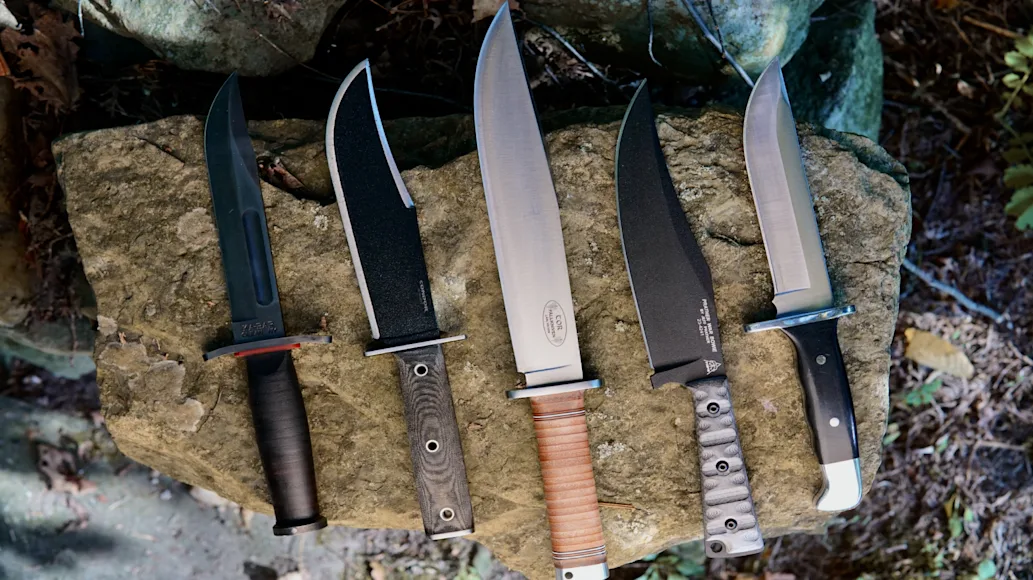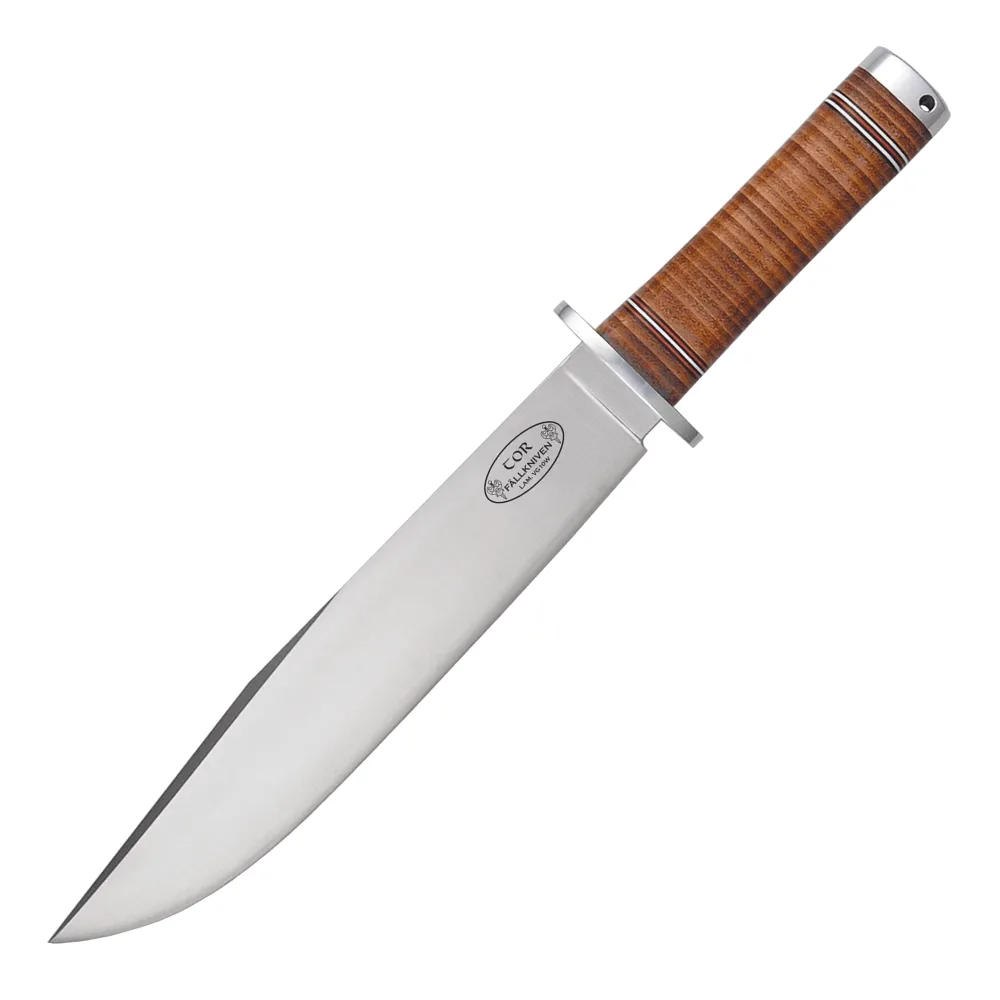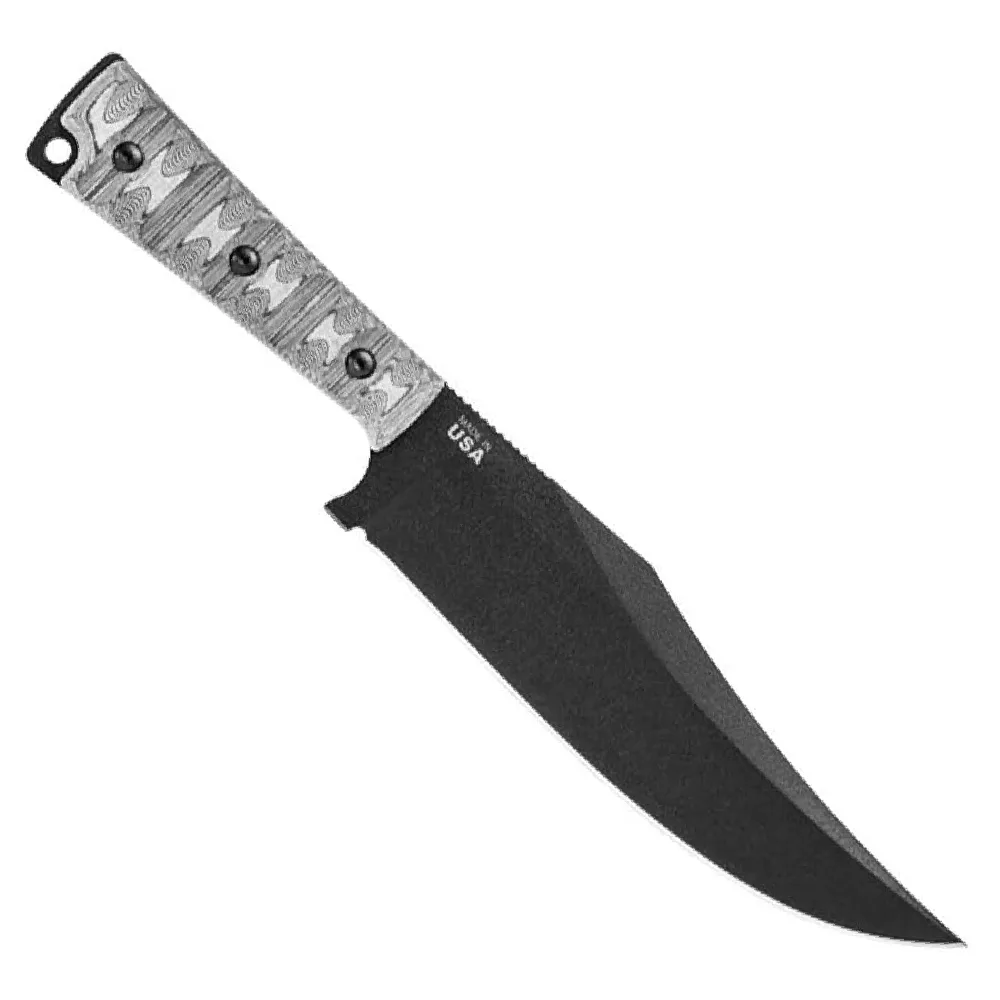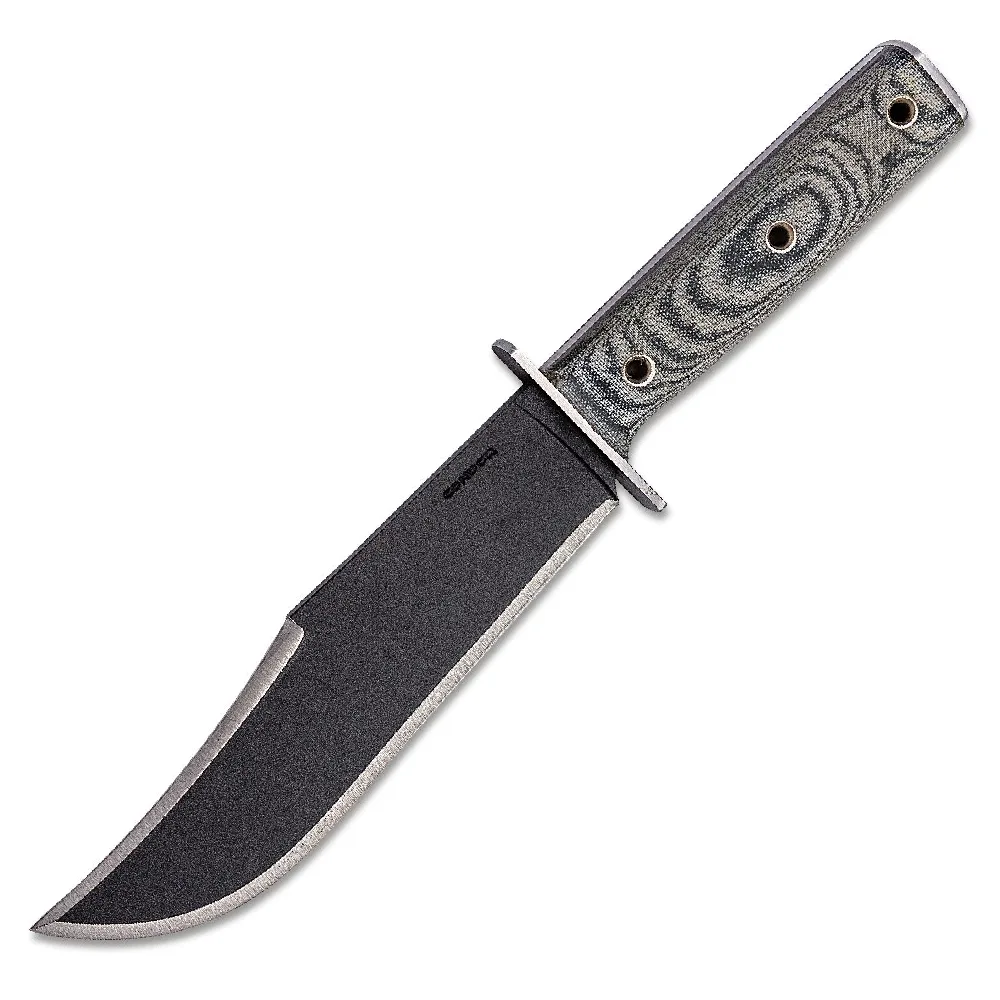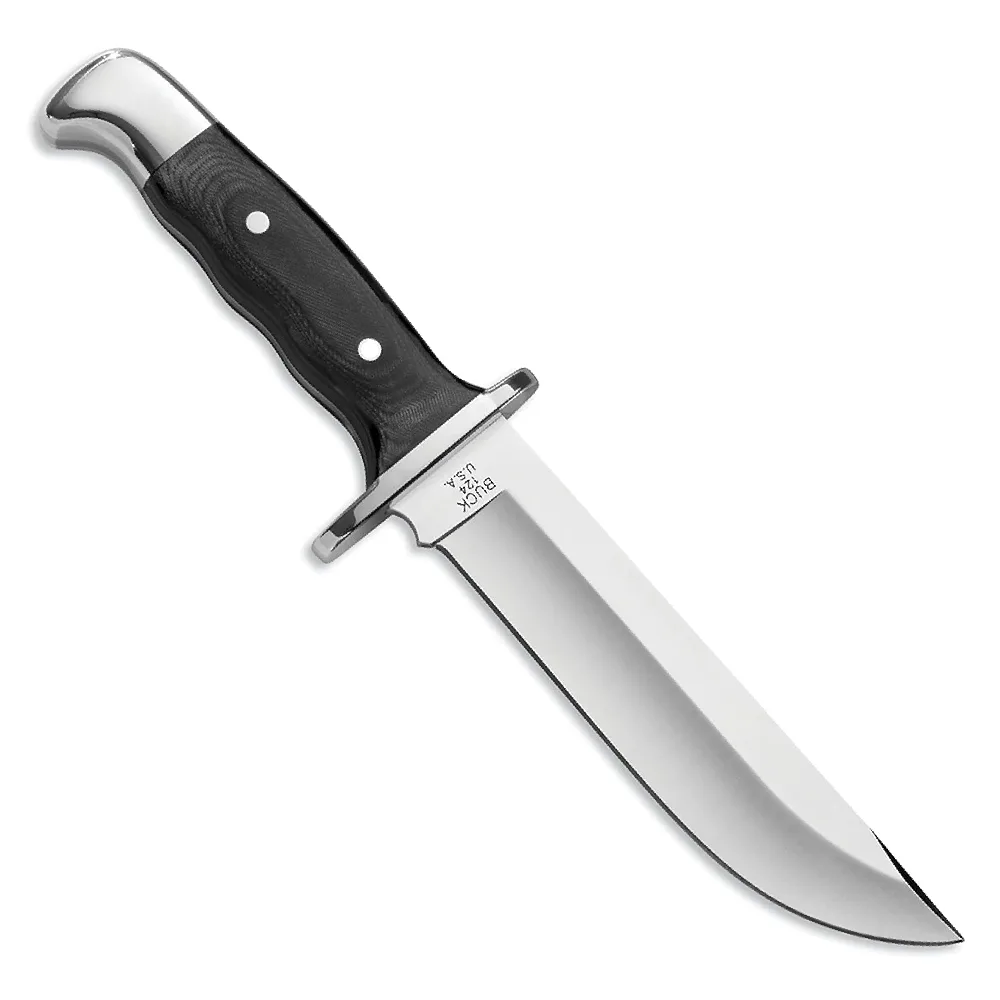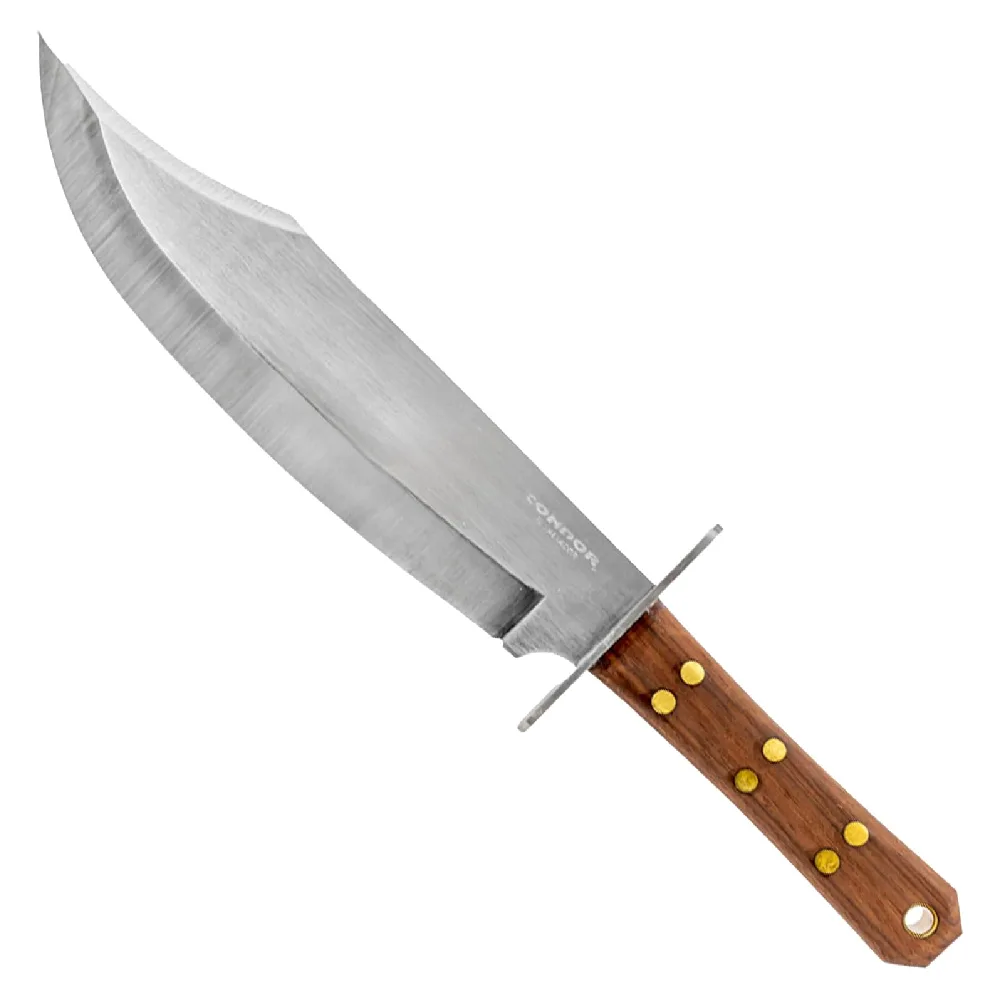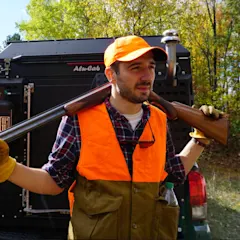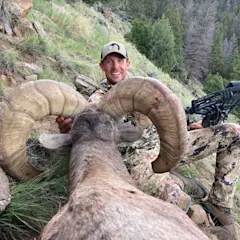We may earn revenue from the products available on this page and participate in affiliate programs. Learn more ›
It’s 1827. Jim Bowie, a frontiersman, illegal slave trader, and real-estate scammer, is in a fight to the death on an island in the Mississippi River. Several of his rivals have attacked him with cane swords, knives, and pistols. Bowie gets shot twice during the melee and is stabbed through the chest with a sword.
Before the fight, Bowie's brother gave him a large knife described as being 9.25 inches long, 1.25 inches wide, with a single edge and uncurved blade. Bowie has it on him, and with a sword in his sternum, he draws it, gets up, and disembowels two of his opponents. The fight goes down as the Sandbar Fight, Bowie becomes a legend, and his knife takes on mythical status.
At least, that’s what we know. Many of the men in this fight were dishonest, newspapers at the time were suspect, and rumors had a way of getting out of hand. One thing was certain: Everybody wanted a knife like Bowie’s after the fight. Frontier blacksmiths were asked to make the biggest, baddest knives possible. And through a mix of American and Mexican knife styles, the Bowie knife was born—a large, sweeping fixed blade with a clip point and hand guard.
What the Bowie knife became is very different from the one described in the Sandbar Fight. But that doesn’t really matter. Bowie knives of the time were fearsome tools designed for combat. Today, they also excel at tasks around camp. From chopping tent stakes to splitting kindling and slicing summer sausage, a big Bowie knife can take it all on. We tested several, and if you’re in the market for a Bowie knife, you’re sure to find something that works below.
Best Overall: Fallkniven NL1L Thor
Best Tactical: Tops Prather War Bowie
Best Budget: Condor Operator Bowie
Best Made in the USA: State & Union Red Spacer USN Ka-Bar
Best Small: Buck 124 Frontiersman
Biggest and Baddest: Condor Undertaker
Best with Damascus Blade: Bear & Son Cutlery Bowie
Best Overall: Fallkniven NL1L Thor
Specs
Length: 15.15 inches
Blade Thickness: 0.27 inches
Materials: VG10W steel and stacked leather handle
Pros
Impeccably finished
Perfect balance
Cons
More expensive (but a good value for the money)
When this knife arrived at my house, it made me nervous. It’s the biggest knife I’ve ever tested, with an overall length greater than 15 inches. The NL1L Thor is made from VG10W steel with a stacked leather handle. It comes in a high quality leather sheath with a bit of cordage to tie around the leg. The blade stock is more than a 1/4-inch thick with a sharp squared-off spine. It’s finished extremely well, with an heirloom quality of craftsmanship.

Leaning more toward a short sword than a knife, the Thor made quick work of chopping a 2x4 piece of wood in half during my test. The balance of the blade is weighted forward, making it almost feel as though it was chopping on its own. It held an edge well nicely, even through some pretty brutal stuff. Part of this blade’s effectiveness is due to its weight. At just over 1 pound, it can drive itself through just about anything you want.
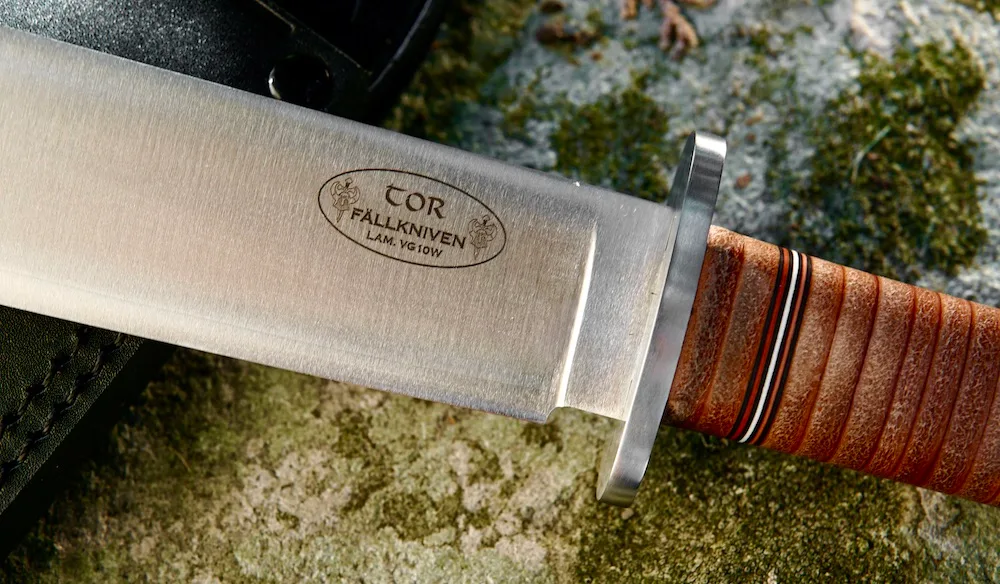
Because the blade stock is on the thicker side, the Thor isn’t the best for slicing. But that doesn’t matter. In my opinion, this knife embodies everything a Bowie should be. I’d use the Thor around camp and in the woods to clear brush and create improvised ground blinds. And if I were ever to find myself headed to a Mississippi River sandbar with several rivals, I’d bring it along just in case. —Matthew Every
Best Tactical: Tops Prather War Bowie
Specs
Length: 12.63 inches
Blade Thickness: 0.25 inches
1095 steel with a linen Micarta handle
Pros
Strong full-tang construction
Easy to grip with wet or cold hands
Cons
Thick, coated blade is not ideal for slicing
The Prather War Bowie was the most well-balanced knife in this test. The weight is slightly forward, and exactly where you want it. And the handle is the perfect size and shape. Designed by Jeff Prather, this knife was designed to win a knife fight. But it’s right at home in the woods, too.
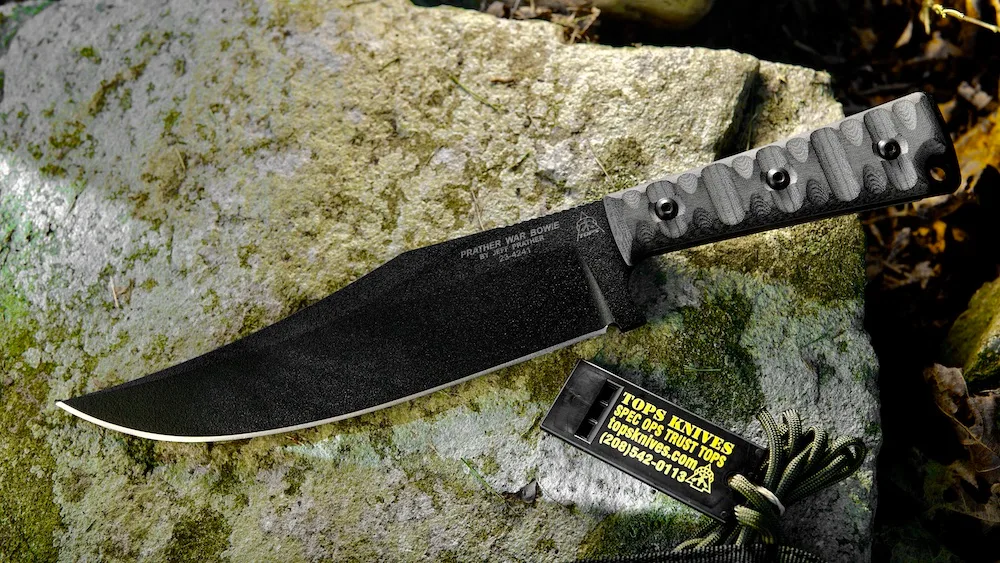
With deep grooves in the Micarta handle and black Traction Coating on the blade, the Prather War Bowie is made for any kind of weather. With its 1/4-inch blade stock and full-tang construction, it’s virtually indestructible. The knife weighs nearly a pound, and comes in a quality sheath with MOLLE webbing. It also comes with an emergency whistle, which is kind of cool.
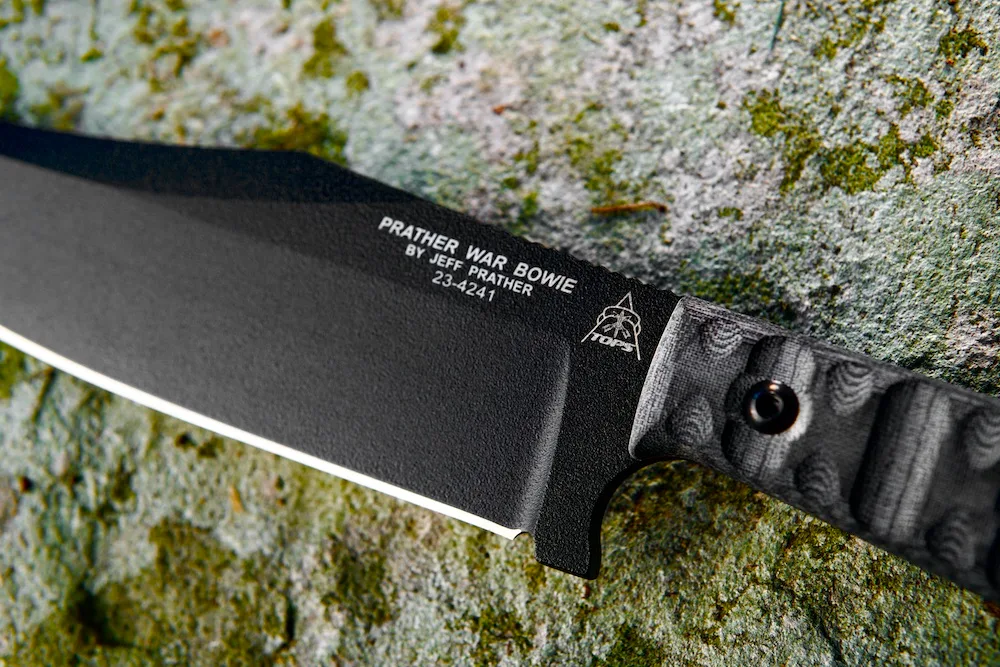
I chopped, sliced, and diced with the War Bowie. It did everything I asked of it and more. I found the 1095 steel blade to hold a nice edge. And it was easy enough to get sharp again. Another neat thing is that you can customize the Prather War Bowie on Tops’ website with a camo finish and serrations. This knife would be at home in the truck, in a boat, or at camp. —M.E.
Best Budget: Condor Operator Bowie
Specs
Length: 12.7 inches
Blade Thickness: 0.2 inches
Materials: 1075 high carbon steel with a Micarta handle
Pros
Kydex-lined sheath
Good for slicing
Cons
Lightweight and not balanced well for chopping
On the more affordable side of this list, the Condor Operator Bowie gives you a lot of Bowie for the money. While the blade stock is thinner than some other knives here, it still gets the job done. The blade's black traction powder coating leaves it in pretty good shape after all is said and done.

The thinner blade of the Operator Bowie lends itself well to slicing food. While this sounds like a mundane task, try prepping a meal for four in the woods with a smaller knife. After testing, I’d say the Condor is a solid camp kitchen knife that can be pressed into service for clearing brush or chopping kindling.
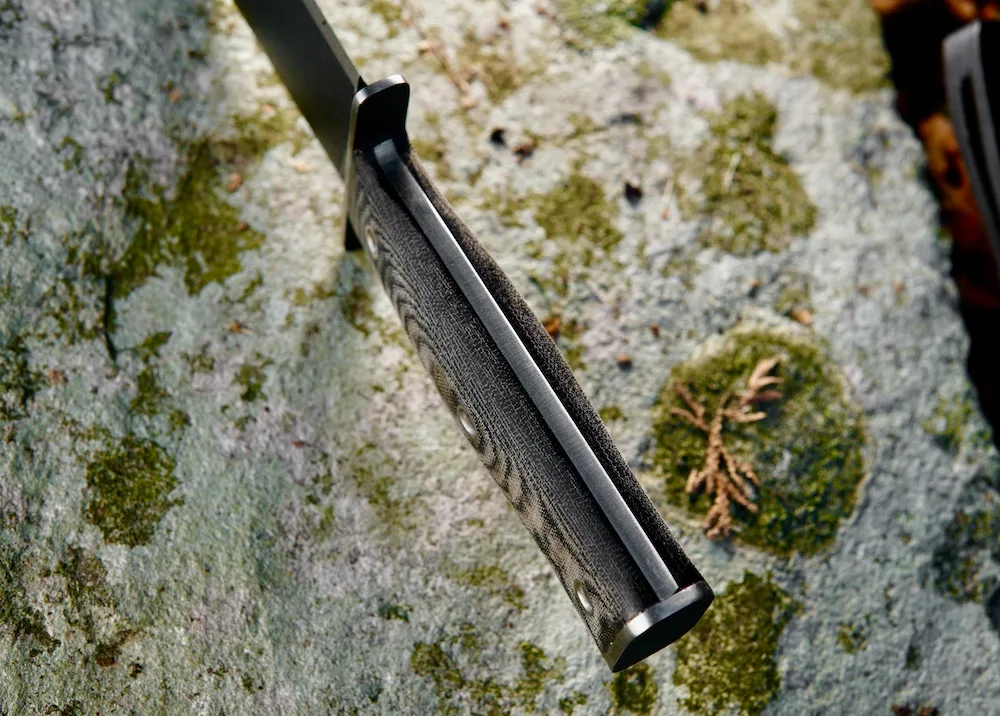
Made from 1075 High Carbon Steel with a powder-coated finish, the blade on the Operator Bowie can resist the elements. With a full-tang construction and a Micarta handle, it can put up with a beating, too. At less than $200, the Operator Bowie isn’t exactly a knife you want to treat like garbage. But you won’t be heartbroken should it get a few scratches on it. —M.E.
Best Made in the USA: State & Union Red Spacer USN Ka-Bar
Length: 12 inches
Blade Thickness: 0.165 inches
Materials: 1095 Cro-Van steel with a leather handle
Pros
Small enough for a variety of camp tasks
Heirloom quality
Made in USA
Cons
Leather handle requires some care
Ka-Bars have been around since the 1940s, when the military put out a call for an all-purpose knife to issue to troops. The classic Ka-Bar is made of stamped steel that was usually parkerized or blued and finished off with a leather handle. The materials were easy to get during wartime, and they were made by the millions.

For this test, Ka-Bar sent us one of their State & Union U.S. Navy knives with a wider hand guard and a red rubber spacer under the blade. The knife is a replica of some of the most sought-after collector knives on the vintage market. The same reasons soldiers carried Ka-Bars make this knife right at home in camp. With a sturdy clip point, you can do things like open cans, and its squared-off spine is great for striking a ferro rod. The knife’s grip felt the best to me out of all the knives we tested. Plus, its 1095 Cro-Van steel blade did everything I asked of it while still holding an edge.

Ka-Bar knives get a bad rap in some knife circles because their handles are made of leather washers. But if you don’t misuse your knife, a Ka-Bar will do just fine. If you need any proof, just look at the decades of military service in some of the roughest conditions imaginable. —M.E.
Best Small: Buck 124 Frontiersman
Specs
Length: 11.75 inches
Blade Thickness: 0.178 inches
Materials: 420HC steel, straight-back Bowie blade
Pros
Good size for a variety of tasks
Lots of quality for the money
Cons
Handle may be too thick for smaller hands
Buck has been making beautifully finished knives at affordable prices for years. The Model 124 is a staple in their collection and a versatile camp knife. With its 6.25-inch blade, it can be used for just about everything a hunter needs and is even small enough to dress an animal—though its not ideal for this task. The hollow-ground blade stayed sharp through the test, and its sleek black micarta handle and full-tang construction make it pretty much bulletproof.
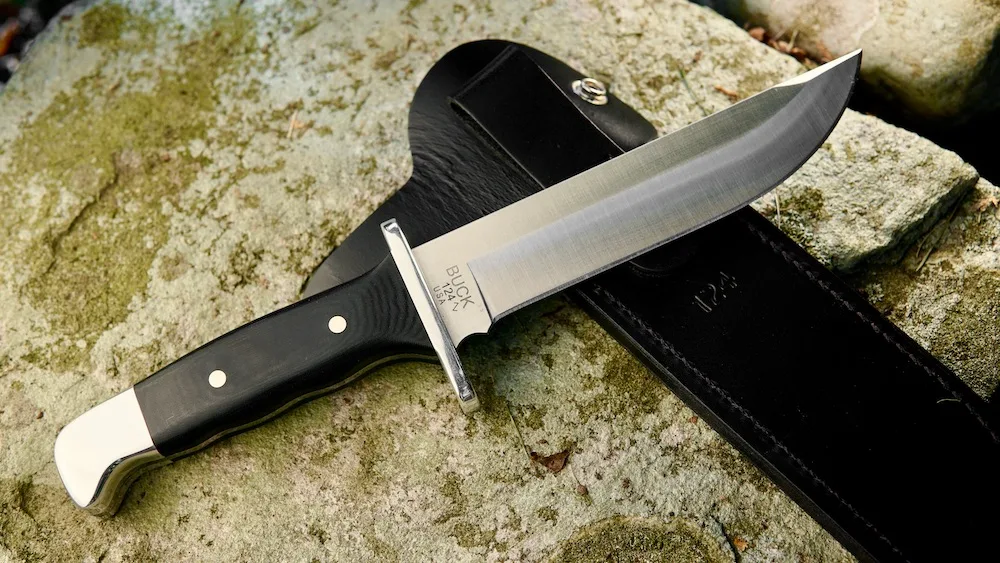
The 124 comes in a quality leather sheath that snaps closed for secure transport. During the test, I had a little trouble chopping with it, but I found it to split wood quite well using the baton method. One potential downside is that, in my opinion, the handle is wide and may be too big for people with small hands.
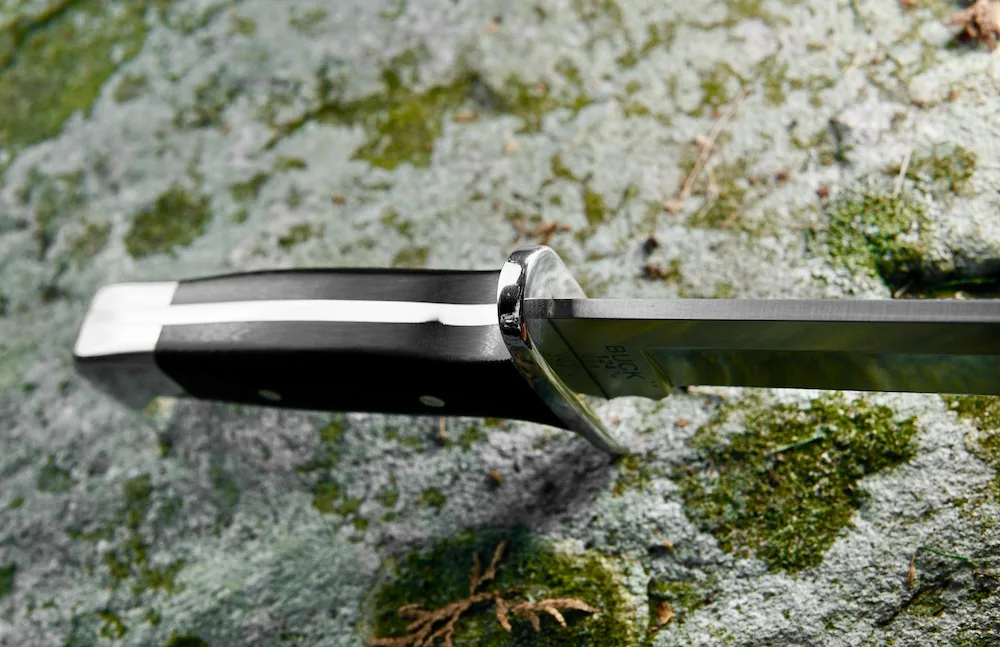
There isn’t much more that I could write about a Buck knife that hasn’t been said already. These knives have had decades in the woods to prove themselves. If you hunt or fish, you almost have to own a Buck knife, and the 124 is a good one to buy. —M.E.
Biggest and Baddest: Condor Undertaker
Specs
Length: 15.5 inches
Blade Thickness: 5 millimeters
Materials: 10.125-inch 1075 carbon steel blade
Pros
Brawny build
Joe Flowers design
Sharp
Cons
A little too heavy
Sub-par sheath
Just look at this thing. The Condor Undertaker boasts a classic Bowie look and is typically priced around $120. The guard is long and heavy—an excellent feature for a knife with this blade type—and I love the walnut handle with multiple gold pin attachments. This knife offers a lot of brawn, but I’ve had numerous hunters tell me they’ve skinned and gutted animals with it.
The blade is forged and sharpened by hand, and the high carbon steel holds an excellent edge. The knife offers an intimidating look, and it doesn’t hurt to have it lying around camp in its welted leather sheath when some nosey camp neighbors come to look things over. Weighing 1.5 pounds, the Undertaker is heavy, which may rob some of its self-defense value. But if you’re a beast and have some arm strength, this may be the bowie you want if a pick-stickin’ match starts. —Jace Bauserman
Best with Damascus Blade: Bear & Son Cutlery Bowie
Specs
Indian Stag bone handle
High-definition Damascus blade
Quick-release leather sheath
Pros
Racy look
Ultra-sharp
Comfortable handle
Durable
Cons
Price
Shy of 15 inches in total length, the knife is a true Bowie, and the 9-inch Damascus blade married with the India Stag Bone handle makes it a stunner. The brass guard is beefy and prevents the hand from slipping down on the 58-60 Rockwell blade.
It’s pricey, but a hunting buddy I respect enormously told me, “This is the best hunting and camping knife I’ve ever used. It’s the perfect combination of brute and beauty, and the Damascus blade is as good as they come.” Bear & Son Cutlery has an excellent reputation, and this top-end Bowie only strengthens its knife-crafting legacy.
The high-definition Damascus steel blade measures 9 inches long. A brass guard has been added to separate the blade from the India Stag Bone handle, which adds to the knife’s beauty and boosts safety. The Quick Release leather sheath is a nice touch, and at 11.5 ounces, the knife has a great strength-to-weight ratio. —J.B.
How We Tested Bowie Knives
In short, I abused these knives. But I didn’t do anything stupid. I find torture tests to be less informative when you put tools through ridiculous circumstances. I didn’t clamp them in a vice and try to break them, or run them over with a bulldozer. I did however chop wood, split kindling, and test the edge of all the knives on paper between tasks.
I also evaluated the knives for quality, balance, and how they feel in the hand. If they came with a sheath, I made a note of the sheath’s quality. And if they came with extras, like blade oil, I noted that, too. Almost all the knives I tested were badass, capable knives, and if they didn’t make the cut, I excluded them from this list. We also have a few knives here from last year that were too good to leave out of this year’s test. No matter your budget, you should find something here that’ll work for you.
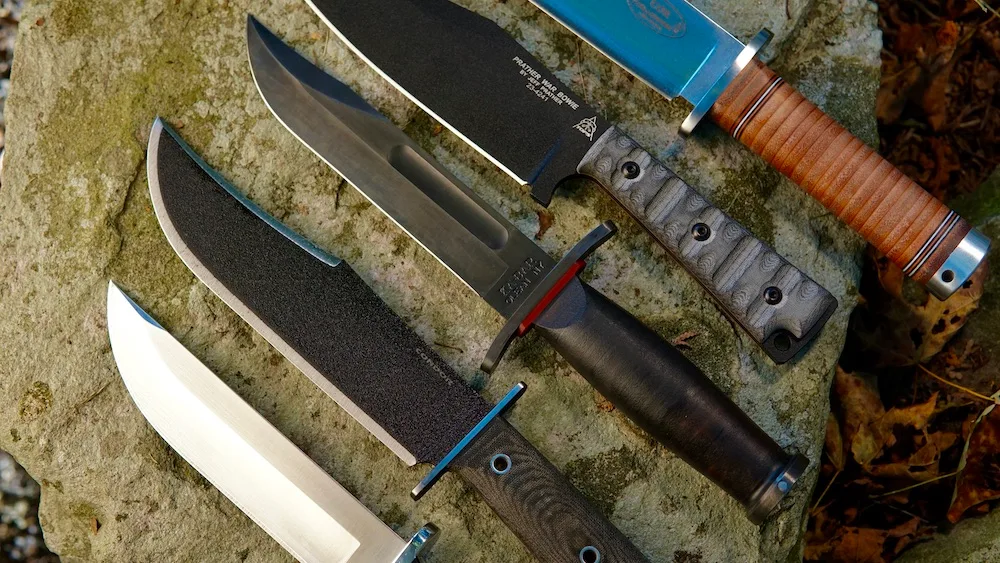
FAQs
Q: What are Bowie knives used for?
Bowie knives are multi-purpose knives, and they can be used for everything from a knife fight to skinning a rabbit. Their multi-function nature makes these knives popular with the outdoor crowd.
Q: What is unique about a Bowie knife?
First, Bowie knives look cool, but they serve many functions. Most unique, perhaps, is you can be using the knife to open a package of bacon one minute, and then the next, be whittling away at branches to create a deadfall trap system. I’ve used Bowie knives to gut elk, scale crappie, and breast a dove.
Q: What happened to the original Bowie knife?
Rumors fly about this, but a Bowie knife attributed to Jim Bowie’s big brother, Rezin Bowie, was donated to the Texas Ranger Hall of Fame Museum. Whether this is the exact Bowie Jim used in the great Sandbar Fight is unknown. The scabbard of the knife is engraved with a saying: “R.P. Bowie to Captain W. MY Lacey.”
Q: How long should a Bowie knife be?
This question will rial up most any knife guru. Some will say a Bowie knife can be 6 inches long, but most put total knife length between 11 and 17 inches.
Q: In what states are Bowie knives illegal?
Knife laws are ever-changing, and in some states, they even vary by county or district. The legislation can also be tricky in how it's worded, especially for Bowie knives. Arizona, for instance, allows citizens to carry any blade concealed. In New York, on the other hand, it is illegal to own any knife adapted for use primarily as a weapon, with the exception of a hunting knife. I recommend visiting the American Knife & Tool Institute's website to check the laws in your state.
Final Thoughts
Unless I’m headed into the backcountry with a pack on my back for an extended hunting or fishing trip, I have a Bowie knife. I have one in my truck, camper, kitchen, etc. I find so many uses for it, and most of the Bowie blades I own have been in my family for generations. A Bowie knife makes a great family heirloom, and they are simply a meat and potatoes knife. They don’t have a lot of flash and flare. Sure, they look cool, but at day’s end, the best Bowie knives were built to serve various purposes, and the more you have one close at hand, the more uses you’ll find for it.
Why Trust Us
For more than 125 years, Field & Stream has been providing readers with honest and authentic coverage of outdoor gear. Our writers and editors eat, sleep, and breathe the outdoors, and that passion comes through in our product reviews. You can count on F&S to keep you up to date on the best new gear. And when we write about a product—whether it’s a bass lure or a backpack—we cover the good and the bad, so you know exactly what to expect before you decide to make a purchase.

